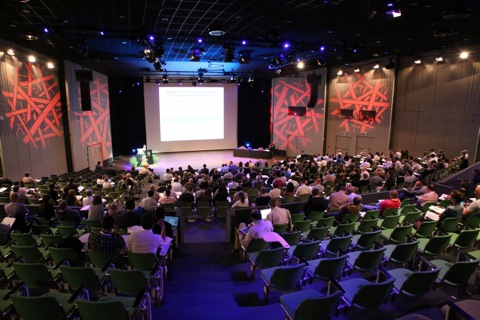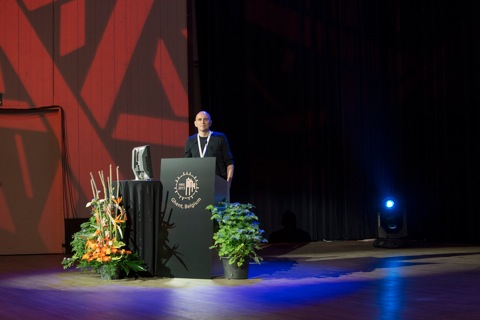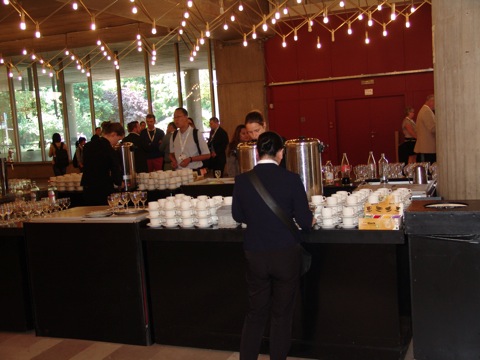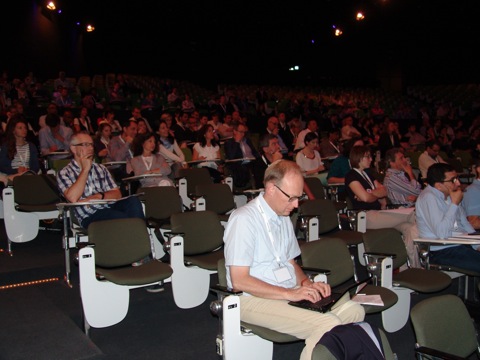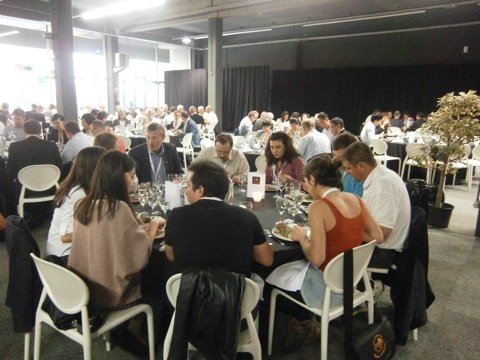Some 290 pig health experts from all over the world attended the International PRRS Congress, held in the Ghent International Congress Centre from 3 to 5 June 2015. The largest delegations were from Belgium (42 delegates), France (30), Spain (26), Netherlands, Italy, China (23 each) and the USA (21).
Highlights:
A total of seven keynote lectures covered the whole biology of the PRRS virus and highlighted the gaps in knowledge, both from the molecular and epidemiological point of view. “Sequence, sequence, sequence” pleaded professor Frederick Chi-Ching Leung (University of Hong Kong, China), asking the researchers to share more viral sequences, in order to be able to reconstitute the phylogeny of the virus. Genomic databases contain around 400 full-genome sequences of the virus, but type-1 isolates (European strains) are underrepresented. Type-2 viruses (American strains), unrelated to modified-live vaccines, have recently been identified on farms in Hungary, Slovakia and Romania, according to professor Tomasz Stadejek, from the Warsaw University of Life Sciences, Poland. Type-1 isolates are also acquiring an increased diversity, which may require an adaptation of molecular diagnostic tools (RT-PCR). Regarding the pig’s response to PRRSV infection, the new approach aimed at the identification of epitopes triggering cytotoxic T-cells seems unlikely to succeed, according to professor Hans Nauwynck (University of Ghent, Belgium). A more promising pathway might be to identify the cell type responsible for the elimination of PRRSV-infected macrophages, this type of immune cells remains unknown to date. The current PRRS control/eradication plans in Europe, North America and China were presented in 3 additional keynote lectures that served as a discussion basis for a round table session aiming at defining strategies for future PRRS control actions.
Award winners:
The best poster awards (€250 each) went to:
- Benjamin Tribble (Kansas State University, USA) on ‘PRRSV isolated from a pig with rebound in viremia following initial clearance is resistant to homologous neutralizing antibody but susceptible to broadly neutralizing antibody’.
- Jin Cui (College of Veterinary Medicine, South China Agricultural University) on ‘Identification and characterization of phage-displayed peptides recognizing Porcine Reproductive and Respiratory Syndrome Virus GP4 protein’.
Elisa Gibert (CReSA, Spain) received the award for the best oral communication (€500). She gave two presentations, ‘Porcine reproductive and respiratory syndrome virus (PRRSV) shedding in oral fluids of naïve and vaccinated pigs exposed to the wild-type virus’ and ‘Comparison of processing, RNA extraction methods and qRT-PCR mixes for the diagnosis of Porcine reproductive and respiratory syndrome virus (PRRSV) infection using oral fluids.’
Seminars:
During the event, two sponsored seminars were held, one organized by MSD Animal Health on ‘the economics of PRRSV: progress made and work yet to be done’ (Professor Derald Holtkamp, Iowa State University, USA), and one by Boehringer Ingelheim on ‘PRRS control: application of science in the field.’ A commercial area was available for the main congress sponsors. The International Porcine Reproductive and Respiratory Syndrome Congress was initially organized in 2004 in Chicago and subsequently held annually in the USA, and also once in Asia. It is the first time that the event was taking place in Europe.
The next PRRS congress will be held in Chicago on December 5-6, 2015 (North American PRRS Symposium: Emerging and Foreign Animal Diseases)
